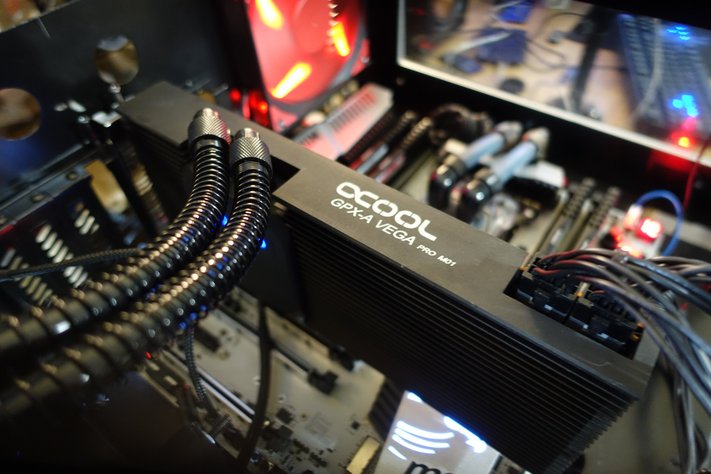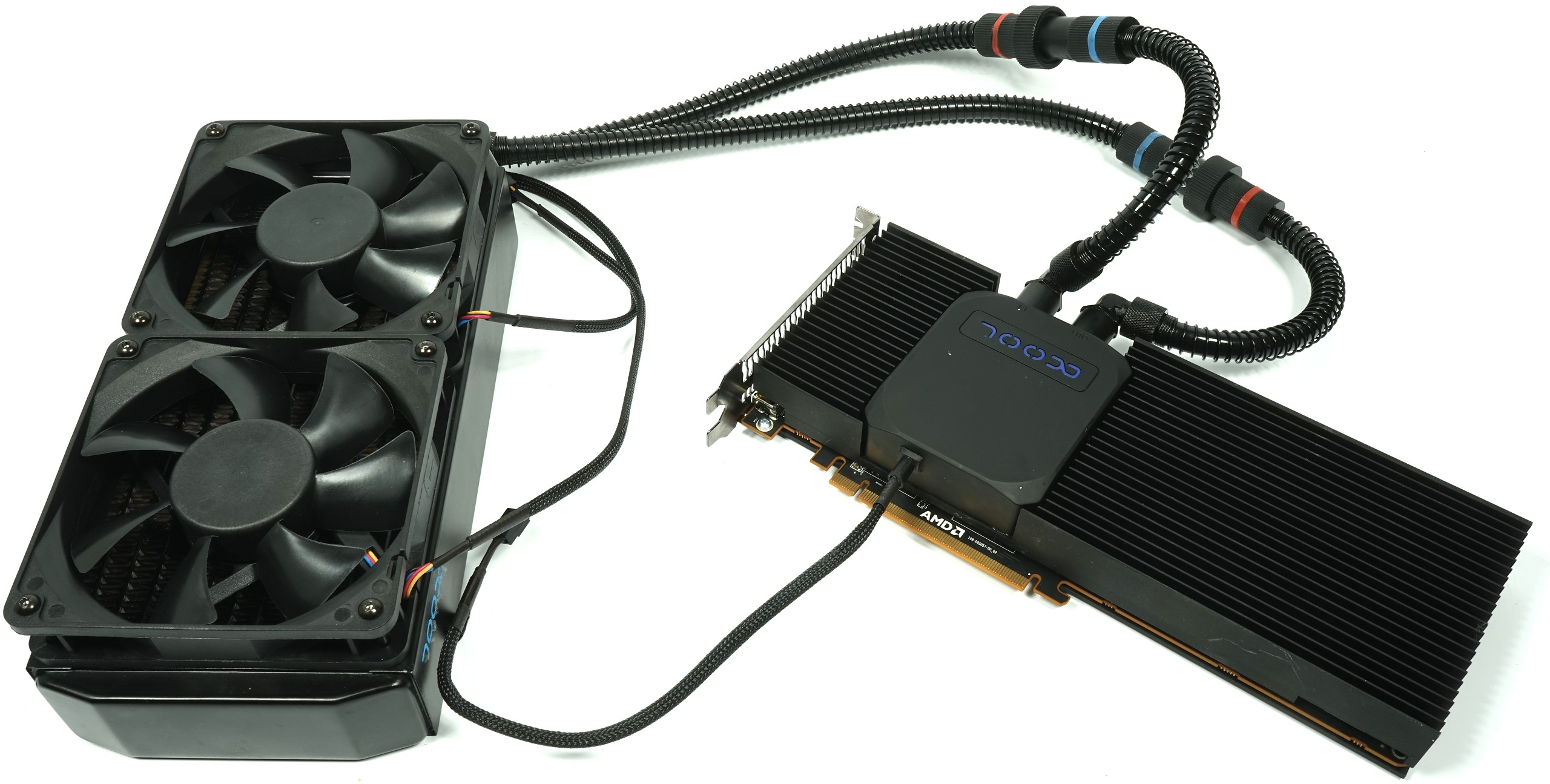Summary
Even after the Chemnitz water games, no euphoria has set in, because the card can't really inspire even when overclocking. Of course, one could also argue that the Power Save Mode is much more moderate and that the card might at least be underpowered.
Only if you really did this, you could buy a Radeon RX 580, which would hardly be slower. Or just keep your old card or buy it from Nvidia, or whatever. This does not make the RX Vega64 more attractive. Only quieter and more economical. But the high price remains anyway and that's where the bunny lies in the pepper.

If you absolutely want to have and use an RX Vega64, you should seriously consider a more meaningful cooling. With the Alphacool GPX Pro you can at least see the way that seems reasonable. Which solution you use at the end or switch to a custom loop is then up to everyone. It will almost always be really worthwhile, as long as you don't choose the radiator size too small.

Before you buy an original Radeon RX Vega64 Liquid Cooled, you should really think about the ways shown here. Clearly over 300 watts of power consumption is simply too much for a small 120mm radiator. You should also choose the water cooling in such a way that the overall solution is as quiet as possible. However, it is better to avoid maximum overclocking, also for the sake of the environment. It's just not worth it.

































Kommentieren